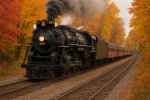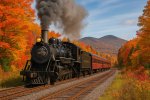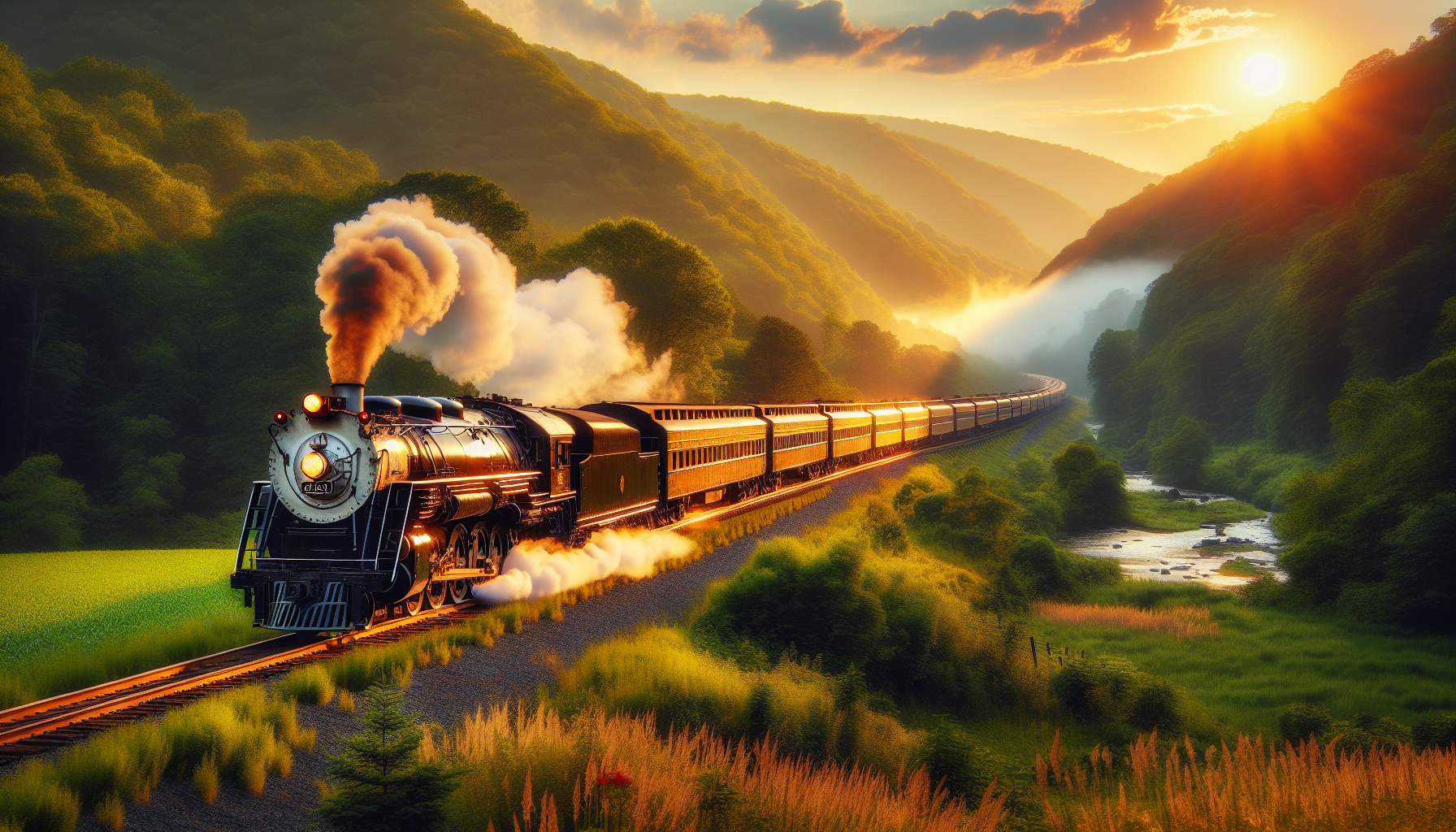Northstar: The Twin Cities' Commuter Rail System
Last revised: September 6, 2024
By: Adam Burns
Northstar is a vital transportation artery in Minnesota, providing efficient and reliable service to thousands of commuters each day.
This comprehensive guide will delve into every aspect of the Northstar system, from its history and operations to its schedule, routes, and amenities.
By the end of this guide, you will have a thorough understanding of why the Northstar is such an essential part of the transit infrastructure in the Twin Cities metropolitan area.
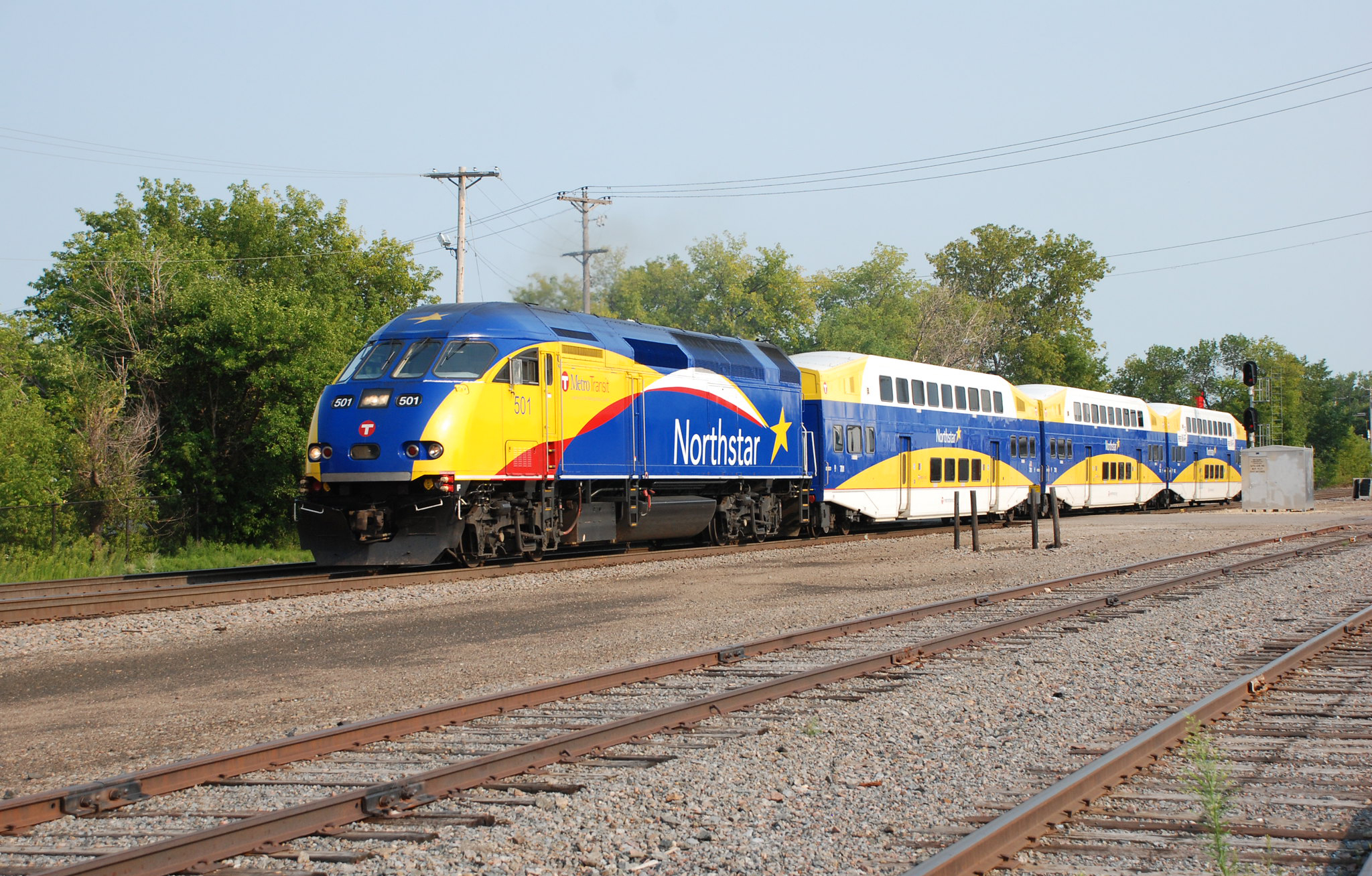 Northstar MP36PH-3C #501 leads a northbound commuter train at Minneapolis Junction on August 26, 2015. Doug Kroll photo.
Northstar MP36PH-3C #501 leads a northbound commuter train at Minneapolis Junction on August 26, 2015. Doug Kroll photo.Introduction
Northstar is a commuter rail service that operates in the Twin Cities metro area of Minnesota.
Managed by Metro Transit, it provides a reliable link between the suburbs northwest of Minneapolis and the city's downtown, catering mainly to daily commuters.
The service ensures that people can avoid the hassles of traffic and the costs associated with car travel, while also reducing the environmental footprint of commuting.
History and Development
Early Planning and Implementation
Discussions about a commuter rail service in Minnesota began as early as the 1990s, with various feasibility studies and planning efforts aimed at addressing the growing congestion on highways leading to downtown Minneapolis.
After extensive research and public consultation, the Northstar Commuter Rail was officially launched on November 16, 2009.
Construction and Costs
The construction of the rail line - totaling 40 miles - involved upgrading the tracks shared with freight trains and building new stations along the route.
The initial investment was substantial, but funding from federal, state, and local sources made it possible. The total cost of the project was approximately $308.5 million.
Expansions and Upgrades
Since its inception, there have been discussions about expanding the line further north and increasing the frequency of trains to better serve the growing suburban population.
Enhancements to infrastructure and rolling stock have also been implemented periodically to improve the service.
Routes and Stations
Main Route
The Northstar Commuter Rail operates on a single route that stretches approximately 40 miles from Big Lake to downtown Minneapolis. The rail line follows a north-western trajectory, providing convenient access to several suburban towns.
Key Stations
- **Big Lake Station**: The northern terminus of the line, providing ample parking and easy access for residents of the surrounding areas.
- **Elk River Station**: A key suburban station, well-equipped with park-and-ride facilities.
- **Ramsey Station**: Another important stop for suburban commuters, offering convenient access to residential neighborhoods.
- **Anoka Station**: Serves the historic city of Anoka and its residential areas.
- **Coon Rapids – Riverdale Station**: Located near the Riverdale shopping center, providing access to both shopping and residential zones.
- **Fridley Station**: Close to industrial areas, catering to both workers and residents.
- **Target Field Station**: The southern terminus and major hub located in downtown Minneapolis, named after the nearby Target Field baseball stadium.
Schedule and Frequency
Peak Hours and Off-Peak Hours
Northstar is designed primarily to cater to the needs of weekday commuters, with most trains running during peak travel hours in the morning and late afternoon. During these times, the frequency of trains is higher to accommodate the rush of commuters heading to and from work.
Weekend and Special Event Service
Though the weekday schedule is the main focus, the Northstar also operates a reduced schedule on weekends and during special events, like sports games and concerts in downtown Minneapolis, ensuring that residents have transportation options for leisure activities as well.
Sample Weekday Schedule
- First trains start at 5:30 AM on Monday, Tuesday, Wednesday, Thursday, Friday. Trains then depart every approximately 58 minutes.
| Day | Operating Hours | Frequency (min) |
|---|---|---|
| Sun | 11:20 AM | Single departure |
| Mon | 5:30 AM - 4:45 PM | 58 |
| Tue | 5:30 AM - 4:45 PM | 58 |
| Wed | 5:30 AM - 4:45 PM | 58 |
| Thu | 5:30 AM - 4:45 PM | 58 |
| Fri | 5:30 AM - 4:45 PM | 58 |
| Sat | 11:20 AM | Single departure |
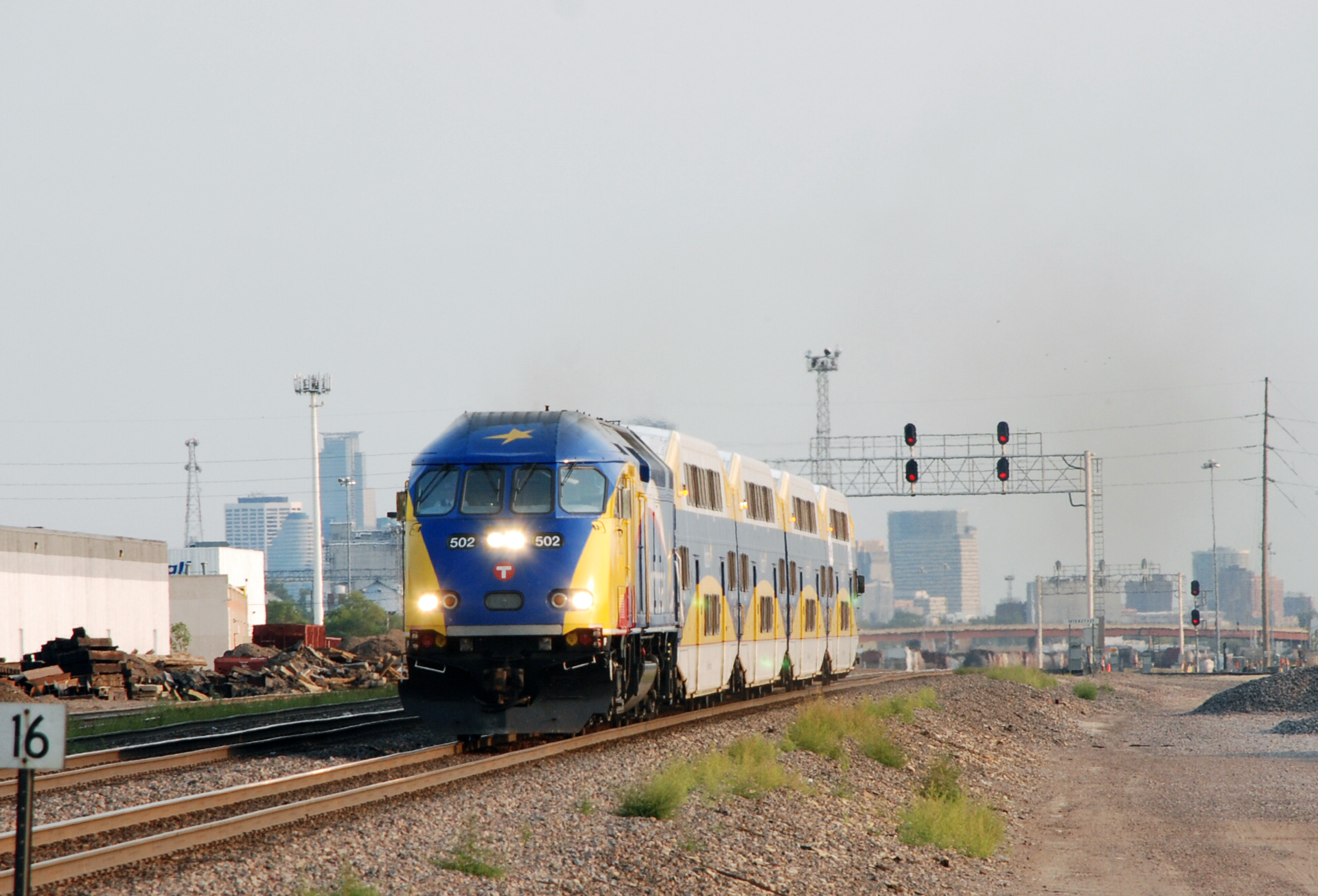 Northstar MP36PH-3C #502 pulls into the Fridley, Minnesota station on August 26, 2016. Doug Kroll photo.
Northstar MP36PH-3C #502 pulls into the Fridley, Minnesota station on August 26, 2016. Doug Kroll photo.Ticketing and Pricing
Fare Structure
The Northstar Commuter Rail uses a distance-based fare structure, meaning that the cost of a ticket depends on the distance traveled.
Ticket Types
- **Single Ride Tickets**: Ideal for occasional riders.
- **Round Trip Tickets**: Offer a convenient option for same-day return travel.
Purchase Options
Tickets can be purchased at station vending machines, online, or through the Metro Transit app, providing flexibility and convenience to passengers.
Discounts and Special Programs
Reduced fares are available for seniors, youths, persons with disabilities, and Medicare cardholders.
Additionally, employer-sponsored transit programs and pre-tax commuter benefits can make commuting more affordable for working professionals.
Onboard Amenities and Services
Seating and Comfort
The Northstar Commuter Rail trains are designed with commuter comfort in mind. Each train offers spacious seating with ample legroom, ensuring a comfortable ride for passengers.
Wi-Fi and Connectivity
To cater to the modern commuter's needs, free Wi-Fi is available onboard, allowing passengers to stay connected, catch up on work, or enjoy entertainment during their journey.
Bike Accommodation
For those who combine biking with their commute, the trains are equipped with bike racks, making it easy to bring bicycles onboard.
Accessibility Features
The trains and stations are designed to be fully accessible, with features such as level boarding, priority seating, and accessible restrooms to ensure that all passengers can travel comfortably and independently.
Accessibility and Safety
Accessibility
Ensuring accessibility for all passengers is a top priority for the Northstar Commuter Rail. All stations and trains are equipped with features to accommodate passengers with disabilities, such as:
- **Elevators** and ***ramps** at stations for easy access.
- **Priority seating** for passengers with mobility issues.
- **Visual and auditory announcements** to keep passengers informed.
Safety Measures
The safety of passengers is paramount. Key safety measures include:
- **Regular maintenance** of trains and track infrastructure.
- **Surveillance cameras** at stations and onboard for security monitoring.
- **Emergency communication systems** in stations and trains.
- **Training for staff** in safety procedures and emergency response.
Environmental Impact
Reducing Carbon Footprint
By providing an efficient and convenient alternative to car travel, the Northstar helps reduce greenhouse gas emissions and traffic congestion.
Estimates suggest that commuter rail systems like Northstar can be significantly more fuel-efficient per passenger mile than personal vehicles.
Sustainable Practices
Metro Transit is committed to sustainable practices, including using energy-efficient technologies and materials in the construction and operation of the rail system. Efforts are continuously being made to improve the environmental sustainability of the service.
Future Developments
Potential Route Extensions
There are ongoing discussions about extending the Northstar Commuter Rail line further north to serve additional communities like St. Cloud. Such an extension would increase ridership and provide even more residents with a reliable transit option.
Service Enhancements
Metro Transit is always looking for ways to improve the Northstar service. Potential future developments include increasing the frequency of trains, upgrading facilities, and introducing new technologies to enhance the passenger experience.
Tips for Commuters
Planning Your Trip
- Use the Metro Transit website or app to check schedules and plan your trip in advance.
- Arrive at the station at least 5-10 minutes before the scheduled departure to ensure you have enough time to purchase tickets and board the train.
Maximize Comfort
- Bring magazines, books, or digital devices to make your journey more enjoyable.
- Take advantage of the onboard Wi-Fi to catch up on emails or stay entertained.
Safety First
- Always be aware of your surroundings and report any suspicious activities to Metro Transit staff.
- Follow posted safety instructions and listen to announcements.
Parking and Transfers
- If driving to a station, take advantage of the park-and-ride facilities available at many stations.
- Look into bus connections and other forms of transit that can help you complete your journey seamlessly once you reach your destination station.
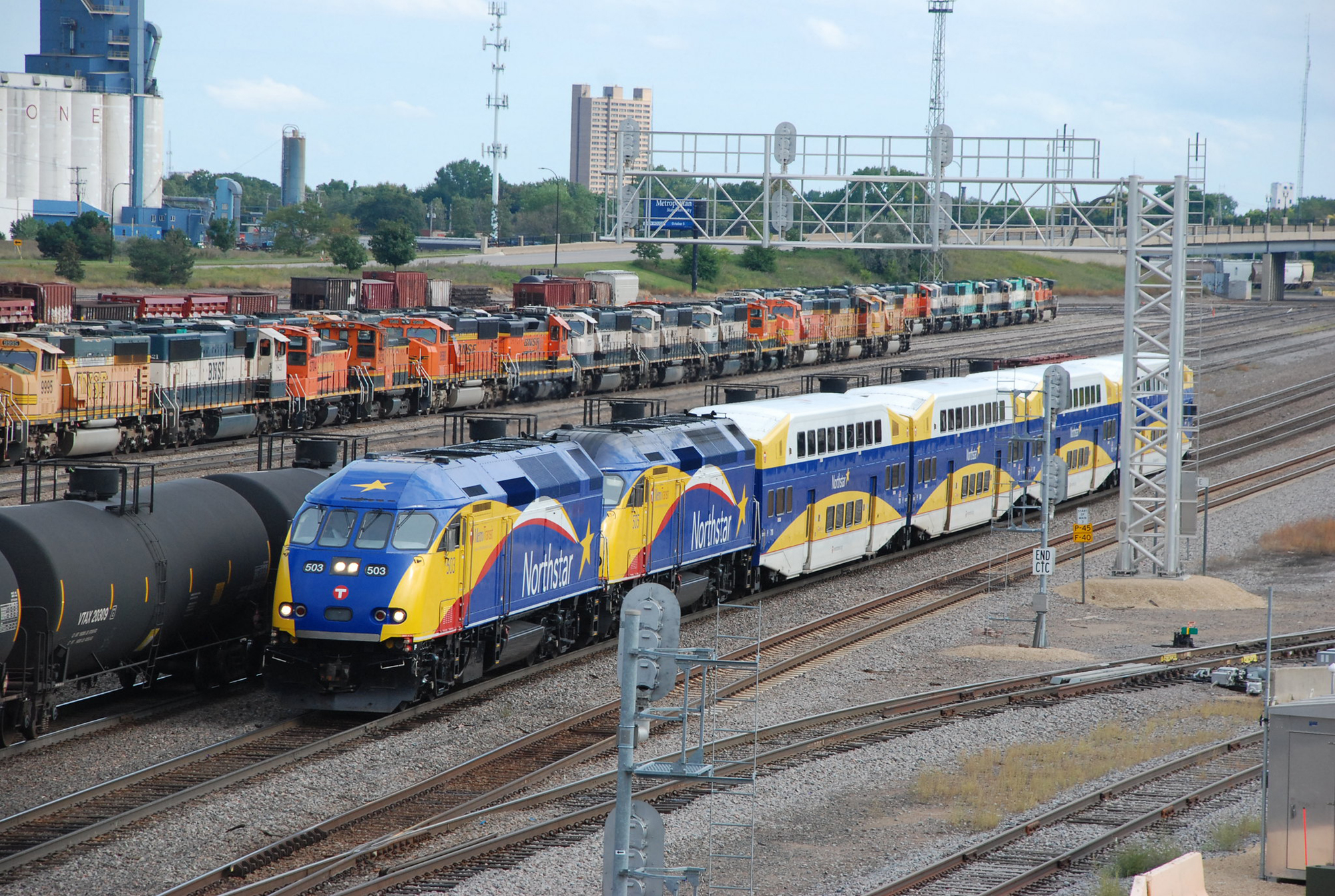 A pair of Northstar MP36PH-3Cs, #503 and #505, are northbound as their commuter train passes the BNSF Railway's Northtown Yard in Fridley, Minnesota on September 14, 2019. Doug Kroll photo.
A pair of Northstar MP36PH-3Cs, #503 and #505, are northbound as their commuter train passes the BNSF Railway's Northtown Yard in Fridley, Minnesota on September 14, 2019. Doug Kroll photo.Conclusion
Northstar is an indispensable part of the Twin Cities' transit infrastructure, providing a reliable, comfortable, and environmentally friendly option for commuting.
Whether you're a daily commuter or an occasional rider, the Northstar offers a convenient alternative to the uncertainties and costs of driving.
With ongoing improvements and potential expansions, the Northstar is poised to serve even more passengers in the coming years, solidifying its role as a cornerstone of regional transport.
Recent Articles
-
Michigan's Whiskey Train Rides
Jul 09, 25 12:30 AM
There's a unique thrill in combining the romance of train travel with the rich, warming flavors of expertly crafted whiskeys. -
New York Whiskey Train Rides
Jul 08, 25 05:32 PM
For those keen on embarking on such an adventure, the Arcade & Attica offers a unique whiskey tasting train at the end of each summer! -
West Virginia Wine Tasting Train Rides
Jul 08, 25 04:43 PM
West Virginia, often celebrated for its breathtaking landscapes and rich history, offers visitors a unique way to explore its rolling hills and picturesque vineyards: wine tasting trains.
